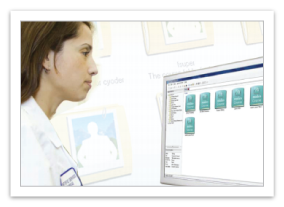Effective Strategies for Latent Print Examiner Training: Preparing New Hires for Success

As a Latent Print Supervisor or Lab Director, bringing a new hire with no experience into your team can be both exciting and challenging. The field of latent print examination demands meticulous attention to detail, a strong scientific foundation, and the ability to withstand scrutiny in legal proceedings. Implementing a comprehensive latent print examiner training program is crucial for your new hire’s success and your lab’s reputation. Let’s explore some effective strategies to get your new examiner up to speed.
One solution is TrainingWorks Friction Ridge Comparison Software training by Mideo Systems. This comprehensive software tool provides a powerful platform for established friction ridge experts to mentor new examiners coming into the field. It combines field set data questions, images, and auto-grading features, minimizing the time experienced examiners spend away from everyday casework while effectively training new examiners.
The Importance of Structured Training
Investing in a robust latent print examiner training program is essential for several reasons:
- Building a strong foundation in latent print analysis
- Ensuring consistency in examination methodologies
- Developing critical thinking and problem-solving skills
- Preparing examiners for courtroom testimony
- Maintaining the integrity of your lab’s work
Key Components of Latent Print Examiner Training
1. Theoretical Knowledge
Start your new hire’s training with a solid theoretical foundation:
- General anatomy and physiology of friction ridge skin
- Principles of friction ridge analysis
- Legal and ethical considerations in forensic science
- ACE-V methodology (Analysis, Comparison, Evaluation, and Verification)
2. Practical Skills Development
Hands-on experience is crucial in latent print examiner training:
- Latent print detection and lifting techniques
- Digital imaging and enhancement methods
- Analysis and Comparison exercises with increasing levels of difficulty
- Documentation and report writing
3. Technology and Tools
Familiarize new hires with essential tools:
- AFIS (Automated Fingerprint Identification System) operations
- Digital comparison software
- Chemical processing techniques and safety procedures
One solution worth considering is TrainingWorks Fingerprint Comparison Software training by Mideo Systems. This comprehensive software tool provides a powerful platform for established fingerprint experts to mentor new examiners coming into the field. It combines field set data questions, hint tags, images, and auto-grading features, minimizing the time experienced examiners spend away from everyday casework while effectively training newcomers.
4. Quality Assurance and Best Practices
Integrate quality control into your training from the start:
- Understanding lab accreditation standards
- Understanding human factors impact on friction ridge examinations
5. Courtroom Testimony Preparation
Prepare your new hire for the legal aspects of their role:
- Mock trial exercises
- Understanding legal terminology
- Techniques for explaining complex concepts to lay audiences
Implementing Your Training Program
Consider these strategies when designing your latent print examiner training program:
- Structured Curriculum: Develop a step-by-step plan with clear milestones and assessments.
- Mentorship Program: Pair new hires with experienced examiners for ongoing guidance and support.
- Blended Learning Approach: Combine in-house training with external courses and online resources.
- Progressive Responsibility: Gradually increase the complexity of tasks as the trainee progresses.
- Regular Evaluations: Conduct frequent assessments to ensure the new hire is meeting expected competency levels.
Leveraging Technology in Training
Modern training solutions can significantly enhance your program’s effectiveness. For instance, TrainingWorks offers a complete computer-based training program that includes lecture materials, exercises, and packets of latent and 10-print images for analysis and comparison training. This program provides a documented training program with:
- Standardized training modules
- Analysis and comparison exercises
- The large amount of practicum exercises (up to 10,000 potential comparisons based on ground truth) in Mideo TrainingWorks is specifically designed with increasingly difficult content as the trainee progresses.
- Progress tracking and assessment features
- Flexibility for self-paced learning
- Options to allow customization for inclusion of agency specific content and recently published ANSI/ASB Standard 014 Standard for Friction Ridge Examination Training Program recommendations.
Setting Realistic Timelines
Effective latent print examiner training for a new hire typically takes 12-24 months. Be prepared to invest this time to ensure your new examiner is fully competent and confident in their role. Tools like Mideo TrainingWorks can help streamline this process by allowing experienced examiners to continue their casework while still effectively mentoring new hires.
Conclusion: Investing in the Future of Forensic Science
Implementing a comprehensive latent print examiner training program for your new hire is an investment in the future of your lab and the field of forensic science. By providing thorough training, you’re not just preparing an individual for a job; you’re shaping a professional who will contribute to the integrity of the justice system.
Remember, the quality of your training directly impacts the reliability of your lab’s work. Take the time to develop a robust program, leverage available resources, and remain committed to the ongoing development of your new hire. Whether you choose to develop an in-house program or utilize Mideo TrainingWorks, your investment in training today will pay dividends in the quality and credibility of your lab’s work for years to come.